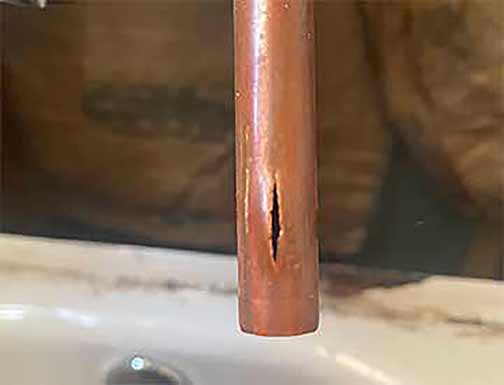Understanding the Causes of Burst Pipes: Key Factors to Consider
Burst pipes can cause significant damage to property and disrupt daily routines. Understanding the causes of burst pipes is crucial in preventing future occurrences. Several factors contribute to the bursting of pipes, including freezing temperatures, high water pressure, corrosion, and physical damage.
Freezing temperatures are a common cause of burst pipes, especially in regions with harsh winters. When water inside the pipes freezes, it expands, putting immense pressure on the pipe walls, leading to cracks or bursts. High water pressure can also strain pipes, causing them to burst. Corrosion, often due to aging pipes or chemical reactions with water, weakens the pipe material, making it susceptible to bursts. Physical damage, such as accidental impacts or construction activities, can also lead to pipe bursts.
Immediate Response: Emergency Plumbers to the Rescue
When a pipe bursts, immediate action is essential to minimize damage and restore normalcy. Emergency plumbers play a vital role in addressing burst pipes promptly. They are equipped with the necessary tools and expertise to handle such emergencies efficiently.
Upon arrival, emergency plumbers first assess the situation to determine the extent of the damage. They locate the burst pipe and shut off the main water supply to prevent further water leakage. This step is crucial in preventing additional damage to the property. Next, they drain the water from the affected area to facilitate repair work.
Repairing Burst Pipes: Techniques and Tools for Effective Repairs
Repairing burst pipes involves several techniques and tools, depending on the severity and location of the burst. Emergency plumbers use their expertise to choose the most appropriate method for each situation. Common repair techniques include pipe replacement, pipe relining, and applying pipe clamps or epoxy putty.
Pipe replacement is often necessary for severely damaged or corroded pipes. This involves cutting out the damaged section and replacing it with a new pipe. Pipe relining is a less invasive method that involves inserting a flexible lining into the damaged pipe, which hardens to form a new, durable inner layer. Pipe clamps and epoxy putty are temporary solutions used to seal minor leaks until a permanent repair can be made.
Preventive Measures: Ensuring Long-Term Pipe Health
Preventing future pipe issues is a key aspect of an emergency plumber’s job. They implement various measures to ensure the long-term health of the plumbing system. Regular maintenance, proper insulation, and pressure regulation are essential steps in preventing burst pipes.
Regular maintenance involves inspecting the plumbing system for signs of wear and tear, corrosion, or potential weak points. Early detection of issues allows for timely repairs, preventing more significant problems. Proper insulation of pipes, especially in cold climates, helps prevent freezing and bursting. Insulating materials, such as foam sleeves or heat tape, are used to protect pipes from extreme temperatures. Pressure regulation is also crucial, as high water pressure can strain pipes and lead to bursts. Installing pressure-reducing valves helps maintain safe water pressure levels.

Advanced Technologies in Pipe Maintenance: Leveraging Innovation
Advancements in technology have revolutionized pipe maintenance, making it easier to prevent and address pipe issues. Emergency plumbers now use sophisticated tools and techniques to ensure the optimal functioning of plumbing systems.
One such technology is video pipe inspection, which involves using a small camera to inspect the interior of pipes. This allows plumbers to identify blockages, cracks, or other issues without invasive digging. Leak detection devices, such as acoustic sensors or thermal imaging, help locate hidden leaks quickly and accurately. Additionally, smart home systems can monitor water usage and detect irregularities, alerting homeowners to potential pipe issues before they escalate.
The Importance of Professional Expertise in Plumbing
While DIY solutions may seem appealing, the expertise of professional emergency plumbers is invaluable in preventing and addressing burst pipes. Their knowledge, experience, and access to specialized tools ensure that repairs are done correctly and efficiently.
Professional plumbers undergo rigorous training and certification, equipping them with the skills to handle complex plumbing issues. They stay updated with the latest industry standards and best practices, ensuring high-quality service. Moreover, professional plumbers provide valuable advice on maintaining the plumbing system and preventing future issues, contributing to the overall safety and functionality of the property.
Case Studies: Real-Life Examples of Burst Pipe Repairs
Examining real-life examples of burst pipe repairs highlights the critical role of emergency plumbers and the effectiveness of preventive measures. These case studies demonstrate the challenges faced and the solutions implemented to restore normalcy.
In one case, a homeowner in a cold climate experienced a burst pipe due to freezing temperatures. The emergency plumber quickly identified the burst pipe, shut off the water supply, and replaced the damaged section. To prevent future occurrences, the plumber insulated the pipes and installed a smart thermostat to maintain a consistent indoor temperature. In another case, a commercial property suffered a burst pipe due to high water pressure. The emergency plumber repaired the burst pipe and installed a pressure-reducing valve to regulate water pressure, preventing further damage.
Conclusion: Ensuring a Safe and Functional Plumbing System
Preventing future pipe issues requires a combination of immediate response, effective repairs, and proactive measures. Emergency plumbers play a crucial role in addressing burst pipes and implementing solutions to ensure the long-term health of the plumbing system. By understanding the causes of burst pipes, utilizing advanced technologies, and relying on professional expertise, homeowners and businesses can maintain a safe and functional plumbing system, minimizing the risk of future pipe issues.


